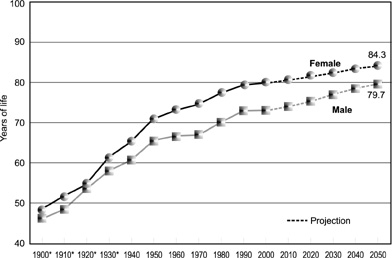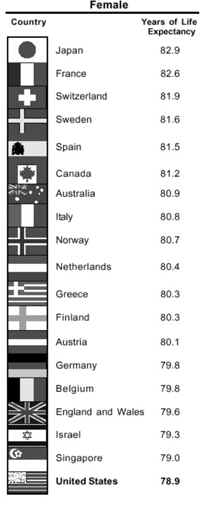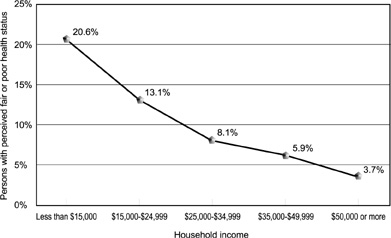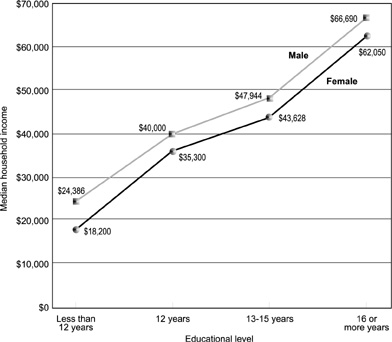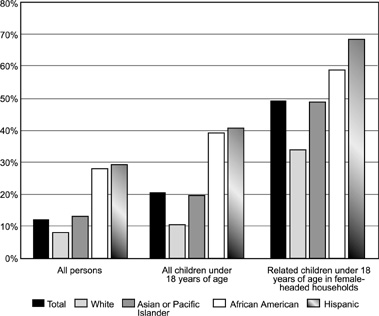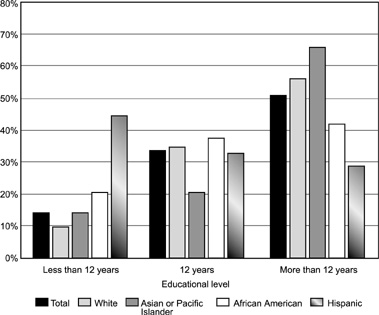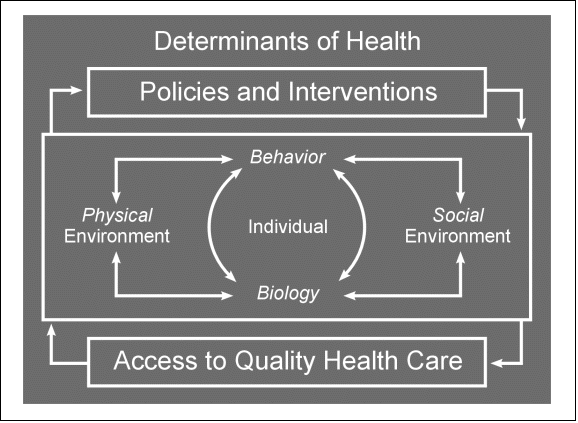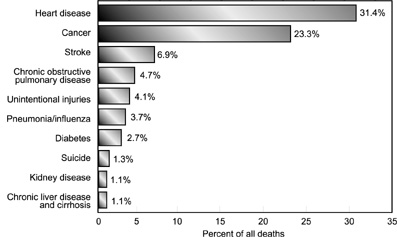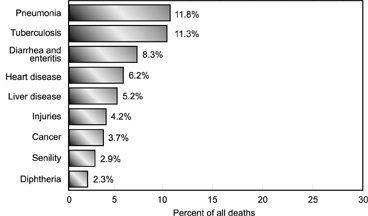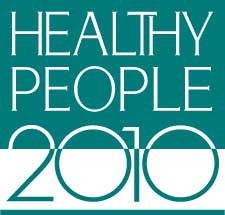
A Systematic Approach to Health Improvement
Healthy People 2010 is about improving health—the health of each individual, the health of communities, and the health of the Nation. However, the Healthy People 2010 goals and objectives cannot by themselves improve the health status of the Nation. Instead, they need to be recognized as part of a larger, systematic approach to health improvement.
This systematic approach to health improvement is composed of four key elements:
n |
Goals | ||
n |
Objectives | ||
n |
Determinants of health | ||
n |
Health status |
Whether this systematic approach is used to improve health on a national level, as in Healthy People 2010, or to organize community action on a particular health issue, such as promoting smoking cessation, the components remain the same. The goals provide a general focus and direction. The goals, in turn, serve as a guide for developing a set of objectives that will measure actual progress within a specified amount of time. The objectives focus on the determinants of health, which encompass the combined effects of individual and community physical and social environments and the policies and interventions used to promote health, prevent disease, and ensure access to quality health care. The ultimate measure of success in any health improvement effort is the health status of the target population.
|
|
Successful community partnerships use a systematic approach to health improvement. |
Healthy People 2010 is built on this systematic approach to health improvement.
Healthy People 2010 Goals
Goal 1: Increase Quality and Years of Healthy Life
The first goal of Healthy People 2010 is to help individuals of all ages increase life expectancy and improve their quality of life.
Life expectancy is the average number of years people born in a given year are expected to live based on a set of age-specific death rates. At the beginning of the 20th century, life expectancy at birth was 47.3 years. Fortunately, life expectancy has increased dramatically over the past 100 years (see figure 1). Today, the average life expectancy at birth is nearly 77 years.
Life expectancy for persons at every age group also has increased during the past century. Based on today’s age-specific death rates, individuals aged 65 years can be expected to live an average of 18 more years, for a total of 83 years. Those aged 75 years can be expected to live an average of 11 more years, for a total of 86 years.
Differences in life expectancy between populations, however, suggest a substantial need and opportunity for improvement. At least 18 countries with populations of 1 million or more have life expectancies greater than the United States for both men and women (see figure 2).
Figure 1. Past and projected female and
male life expectancy at birth, United States, 1900–2050. |
||||
|
||||
|
Figure 2. Life expectancy at birth by gender and ranked by selected countries, 1995. |
||||
|
There are substantial differences in life expectancy among different population groups within the United States. For example, women outlive men by an average of 6 years. White women currently have the greatest life expectancy in the United States. The life expectancy for African American women has risen to be higher today than that for white men. People from households with an annual income of at least $25,000 live an average of 3 to 7 years longer, depending on gender and race, than do people from households with annual incomes of less than $10,000.
Quality of life reflects a general sense of happiness and satisfaction with our lives and environment. General quality of life encompasses all aspects of life, including health, recreation, culture, rights, values, beliefs, aspirations, and the conditions that support a life containing these elements. Health-related quality of life reflects a personal sense of physical and mental health and the ability to react to factors in the physical and social environments. Health-related quality of life is more subjective than life expectancy and therefore can be more difficult to measure. Some tools have been developed to measure health-related quality of life.
Global assessments, in which a person rates his or her health as “poor,” “fair,” “good,” “very good,” or “excellent,” can be reliable indicators of one’s perceived health. In 1996, 90 percent of people in the United States reported their health as good, very good, or excellent.
Healthy days is another measure of health-related quality of life that estimates the number of days of poor or impaired physical and mental health in the past 30 days. In 1998, adults averaged 5.5 days during the past month when their physical or mental health was not good—including 1.8 days when they were not able to do their usual activities. However, 52 percent of adults reported having good physical and mental health for the entire month in contrast with 10 percent of adults who were unhealthy for all 30 days. Typically, younger adults report more mentally unhealthy days while older adults report more physically unhealthy days.
Years of healthy life is a combined measure developed for the Healthy People initiative. The difference between life expectancy and years of healthy life reflects the average amount of time spent in less than optimal health because of chronic or acute limitations. Years of healthy life increased in 1996 to 64.2 years, a level that was only slightly above the 64.0 years at the beginning of the decade. During the same period, life expectancy increased a full year.
As with life expectancy, various population groups can show dramatic differences in quality of life. For example, people in the lowest income households are five times more likely to report their health as fair or poor than people in the highest income households (see figure 3). A higher percentage of women report their health as fair or poor compared to men. Adults in rural areas are 36 percent more likely to report their health status as fair or poor than are adults in urban areas.
Healthy People 2010 seeks to increase life expectancy and quality of life over the next 10 years by helping individuals gain the knowledge, motivation, and opportunities they need to make informed decisions about their health. At the same time, Healthy People 2010 encourages local and State leaders to develop communitywide and statewide efforts that promote healthy behaviors, create healthy environments, and increase access to high-quality health care. Because individual and community health are virtually inseparable, both the individual and the community need to do their parts to increase life expectancy and improve quality of life.
|
Figure 3. Percentage of persons with perceived fair or poor health status by household income, United States, 1995. |
||
|
Goal 2: Eliminate Health Disparities
The second goal of Healthy People 2010 is to eliminate health disparities among segments of the population, including differences that occur by gender, race or ethnicity, education or income, disability, geographic location, or sexual orientation. This section highlights ways in which health disparities can occur among various demographic groups in the United States.
Whereas some differences in health between men and women are the result of biological differences, others are more complicated and require greater attention and scientific exploration. Some health differences are obviously gender specific, such as cervical and prostate cancers.
Overall, men have a life expectancy that is 6 years less than that of women and have higher death rates for each of the 10 leading causes of death. For example, men are two times more likely than women to die from unintentional injuries and four times more likely than women to die from firearm-related injuries. Although overall death rates for women currently may be lower than for men, women have shown increased death rates over the past decade in areas where men have experienced improvements, such as lung cancer. Women also are at greater risk for Alzheimer’s disease than men are and twice as likely as men to be affected by major depression.
Current information about the biologic and genetic characteristics of African Americans, Hispanics, American Indians, Alaska Natives, Asians, Native Hawaiians, and Pacific Islanders does not explain the health disparities experienced by these groups compared with the white, non-Hispanic population in the United States. These disparities are believed to be the result of the complex interaction among genetic variations, environmental factors, and specific health behaviors.
Even though the Nation’s infant mortality rate is down, the infant death rate among African Americans is still more than double that of whites. Heart disease death rates are more than 40 percent higher for African Americans than for whites. The death rate for all cancers is 30 percent higher for African Americans than for whites; for prostate cancer, it is more than double that for whites. African American women have a higher death rate from breast cancer despite having a mammography screening rate that is nearly the same as the rate for white women. The death rate from HIV/AIDS for African Americans is more than seven times that for whites; the rate of homicide is six times that for whites.
Hispanics living in the United States are almost twice as likely to die from diabetes as are non-Hispanic whites. Although constituting only 11 percent of the total population in 1996, Hispanics accounted for 20 percent of the new cases of tuberculosis. Hispanics also have higher rates of high blood pressure and obesity than non-Hispanic whites. There are differences among Hispanic populations as well. For example, whereas the rate of low birth weight infants is lower for the total Hispanic population compared with that of whites, Puerto Ricans have a low birth weight rate that is 50 percent higher than the rate for whites.
American Indians and Alaska Natives have an infant death rate almost double that for whites. The rate of diabetes for this population group is more than twice that for whites. The Pima of Arizona have one of the highest rates of diabetes in the world. American Indians and Alaska Natives also have disproportionately high death rates from unintentional injuries and suicide.
Asians and Pacific Islanders, on average, have indicators of being one of the healthiest population groups in the United States. However, there is great diversity within this population group, and health disparities for some specific segments are quite marked. Women of Vietnamese origin, for example, suffer from cervical cancer at nearly five times the rate for white women. New cases of hepatitis and tuberculosis also are higher in Asians and Pacific Islanders living in the United States than in whites.
Inequalities in income and education underlie many health disparities in the United States. Income and education are intrinsically related and often serve as proxy measures for each other (see figure 4). In general, population groups that suffer the worst health status also are those that have the highest poverty rates and the least education. Disparities in income and education levels are associated with differences in the occurrence of illness and death, including heart disease, diabetes, obesity, elevated blood lead level, and low birth weight. Higher incomes permit increased access to medical care, enable people to afford better housing and live in safer neighborhoods, and increase the opportunity to engage in health-promoting behaviors.
Figure 4. Relationship between education and median
household income among adults aged 25 years and older, by gender, United States, 1996. |
||
|
Income inequality in the United States has increased over the past three decades. There are distinct demographic differences in poverty by race, ethnicity, and household composition (see figure 5) as well as geographical variations in poverty across the United States. Recent health gains for the U.S. population as a whole appear to reflect achievements among the higher socioeconomic groups; lower socioeconomic groups continue to lag behind.
Figure 5. Percentage of persons below the poverty level by race and ethnicity and type of household, United States, 1996. |
||
|
Overall, those with higher incomes tend to fare better than those with lower incomes. For example, among white men aged 65 years, those in the highest income families could expect to live more than 3 years longer than those in the lowest income families. The percentage of people in the lowest income families reporting limitation in activity caused by chronic disease is three times that of people in the highest income families.
The average level of education in the U.S. population has increased steadily over the past several decades—an important achievement given that more years of education usually translate into more years of life. For women, the amount of education achieved is a key determinant of the welfare and survival of their children. Higher levels of education also may increase the likelihood of obtaining or understanding health-related information needed to develop health-promoting behaviors and beliefs in prevention. But again, educational attainment differs by race and ethnicity (see figure 6). Among people aged 25 to 64 years in the United States, the overall death rate for those with less than 12 years of education is more than twice that for people with 13 or more years of education. The infant mortality rate is almost double for infants of mothers with less than 12 years of education compared with those with an educational level of 13 or more years.
Figure 6. Percentage of adults aged 25 to 64 years by educational level, race and ethnicity, United States, 1996. |
||
|
People with disabilities are identified as persons having an activity limitation, who use assistance, or who perceive themselves as having a disability. In 1994, 54 million people in the United States, or roughly 21 percent of the population, had some level of disability. Although rates of disability are relatively stable or falling slightly for people aged 45 years and older, rates are on the rise among the younger population. People with disabilities tend to report more anxiety, pain, sleeplessness, and days of depression and fewer days of vitality than do people without activity limitations. People with disabilities also have other disparities, including lower rates of physical activity and higher rates of obesity. Many people with disabilities lack access to health services and medical care.
Twenty-five percent of Americans live in rural areas, that is, places with fewer than 2,500 residents. Injury-related death rates are 40 percent higher in rural populations than in urban populations. Heart disease, cancer, and diabetes rates exceed those for urban areas. People living in rural areas are less likely to use preventive screening services, exercise regularly, or wear safety belts. In 1996, 20 percent of the rural population was uninsured compared with 16 percent of the urban population. Timely access to emergency services and the availability of specialty care are other issues for this population group.
America’s gay and lesbian population comprises a diverse community with disparate health concerns. Major health issues for gay men are HIV/AIDS and other sexually transmitted diseases, substance abuse, depression, and suicide. Gay male adolescents are two to three times more likely than their peers to attempt suicide. Some evidence suggests lesbians have higher rates of smoking, overweight, alcohol abuse, and stress than heterosexual women. The issues surrounding personal, family, and social acceptance of sexual orientation can place a significant burden on mental health and personal safety.
Although the diversity of the American population may be one of the Nation’s greatest assets, it also represents a range of health improvement challenges—challenges that must be addressed by individuals, the community and State in which they live, and the Nation as a whole.
Healthy People 2010 recognizes that communities, States, and national organizations will need to take a multidisciplinary approach to achieving health equity—an approach that involves improving health, education, housing, labor, justice, transportation, agriculture, and the environment, as well as data collection itself. In fact, current data collection methods make it impossible to assess accurately the health status for some populations, particularly relatively small ones. However, the greatest opportunities for reducing health disparities are in empowering individuals to make informed health care decisions and in promoting communitywide safety, education, and access to health care.
Healthy People 2010 is firmly dedicated to the principle that—regardless of age, gender, race or ethnicity, income, education, geographic location, disability, and sexual orientation—every person in every community across the Nation deserves equal access to comprehensive, culturally competent, community-based health care systems that are committed to serving the needs of the individual and promoting community health.
